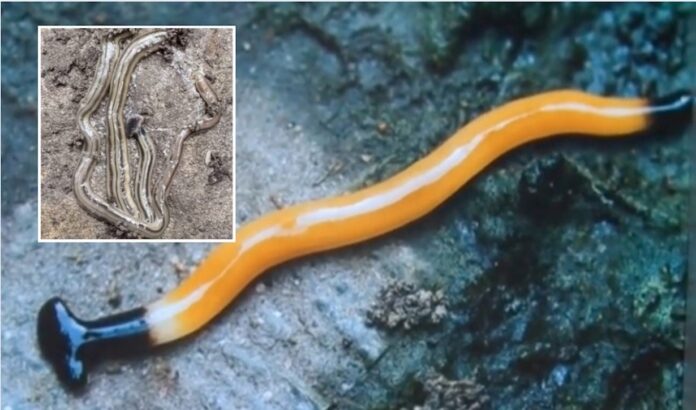- Toxic hammerhead worms are invading Texas, releasing a toxin that can irritate human skin and cause painful rashes on contact.
- Pets, especially dogs, risk sickness if they eat these toxic worms, raising concerns for animal safety.
- Experts advise against cutting or squashing the worms, recommending vinegar, salt, or freezing to safely eliminate them.
A wave of unsettling news has gripped Texas as invasive hammerhead worms, some stretching up to a foot long, emerge in large numbers after recent heavy rains. While these bizarre creatures might look like something from a horror film, they are more than just an eerie curiosity. Their presence carries real risks for human health that residents can’t afford to ignore.
The Hidden Danger Lurking Beneath Your Feet
Hammerhead worms might not attack like snakes or spiders, but they carry a potent threat through their skin. These flatworms secrete a powerful toxin called tetrodotoxin, a substance dangerous enough to cause painful skin irritation or rashes when handled without care. Unlike a simple bug bite or sting, contact with these worms can lead to uncomfortable reactions, leaving people alarmed and cautious.
For many Texans who have stumbled across these worms, the shock isn’t just their size or strange hammer-shaped head—it’s the fear of what could happen if they accidentally touch or pick one up. Local residents have flooded social media with warnings, sharing videos and photos while urging caution.
Elle, a Houston homeowner, described her eerie encounter: “It was slithering right across my window screen. Honestly, it gave me the creeps. Knowing it’s toxic makes it even worse.” Another Texan, Adam Ingle, went further, calling the worms “demonic” after spotting one near his home. His reaction speaks to a growing sense of unease around these unwelcome invaders.
Pets at Risk: A Danger Many Don’t See Coming
The worry isn’t limited to humans. Veterinarians have issued warnings that curious pets, especially dogs, might ingest these worms, unaware of the danger. The toxin within the worms can cause vomiting and sickness in animals, putting pet owners on high alert. Cases of pets falling ill after eating hammerhead worms have already been reported, intensifying the concern in communities where these creatures have surfaced.
Why You Shouldn’t Touch or Cut These Worms
Despite the desire to get rid of these creepy crawlers quickly, experts strongly caution against the common instinct to squash or chop them up. Hammerhead worms reproduce asexually, meaning if you slice one into pieces, each piece can grow into a new worm, multiplying the problem instead of solving it.
The Texas Invasive Species Institute recommends safer removal methods, such as spraying vinegar, applying salt, or freezing the worms to kill them effectively. Always use gloves or paper towels when handling them to avoid skin contact and the risk of toxin exposure.
Texas Agriculture Commissioner Sid Miller stressed, “Don’t kill it by cutting or squishing because it makes three or four more worms. Handling them the wrong way just spreads them faster.”
What Residents Should Know and Do
Heavy rains in Texas have pushed these worms to the surface, increasing encounters with people. Since many are unaware of the risks, there’s a real need for public education about how to identify these worms and protect themselves and their pets.
Anyone spotting these worms should avoid direct contact and report sightings to local authorities. The growing presence of these toxic invaders demands vigilance.
For now, Texans are urged to keep a close watch on their surroundings, especially gardens and yards where these worms may appear. Taking precautions can prevent painful skin irritation and protect pets from harmful exposure.
A Growing Public Concern With Real Consequences
The invasion of hammerhead worms in Texas has stirred anxiety among communities. Their unusual appearance combined with their toxic secretions has caused many to view them as a dangerous new threat. With pets and people at risk, it’s clear this is more than just a creepy nuisance—it’s a public health concern requiring immediate attention.
As this strange invasion unfolds, residents face the challenge of living alongside these toxic creatures and learning how to defend themselves without making the situation worse. The last thing Texans want is for a simple backyard stroll to turn into a painful or dangerous encounter with these toxic worms.




